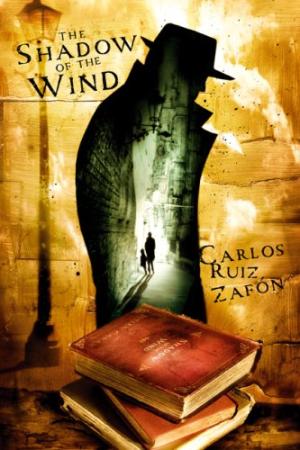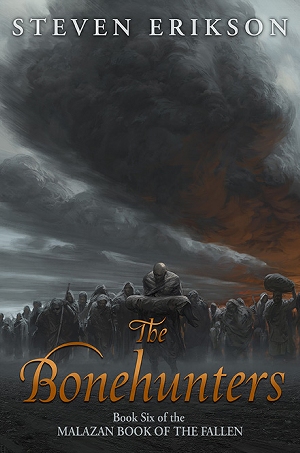I plan to focus more on being concise than complete but I’m still spread across too many things to make any decent use of this place, going forward.
I was about to start saying “a few weeks ago”, but now I notice the news came out in the middle of October. Time is ACCelerating.
I wanted to write down a few scattered and confused thoughts about the announce of the delay of the final book in the Kharkanas Trilogy, in favor of the planned trilogy that instead comes after the main Malazan sequence. Right now I’m 50 pages into the second book (Fall of Light) and slowly acclimatizing myself again to that story. Forge of Darkness remains for me the very best by far in the whole overall cycle, and every time I pick up the book to check something and re-read a page here and there I reconfirm that idea.
I was of course disappointed by this choice, though not surprised at all reading that this prequel trilogy sold badly. But I’ll put this discussion to the side, there are many reasons why the prequel trilogy didn’t get a lot of attention. It’s 2018 (now), I’m still at the beginning of Fall of Light, and I even have the last four books still to read in the main series, plus pretty much all of Esslemont. So it’s not like I need a book right now. A Walk in Shadow, the final book in this prequel trilogy, is not “canceled”, just delayed. Maybe to be written after this other trilogy is finished, or maybe to be written just right after the first new book. It’s up to Erikson.
My worry isn’t about an urge to have the book as soon as possible, my worry is that time affects and transforms things. It isn’t about having the book out in five years from now instead of next year, it’s that the delay will make it a different book. Maybe it’s already even too late for A Walk in Shadow, I would have hoped Erikson already deep into it in order to carry exactly the style and momentum and sharp, almost visionary focus that I admired in Forge of Darkness. My belief is that this time will transform the book, necessarily. Will Erikson be able to dive back in and make as if no time went by? Will it be the same book as if it was written now? So I worry that now this trilogy, that is the best Malazan especially for that style, tone and mythical vision, that specific mindset, is doomed to become somewhat “lopsided”, even in the case it will be completed later on. As with what I wrote about Sanderson, the risk isn’t about not completing the thing, but about being in that relevant mind-space (and one has to be honest, Sanderson is better, and has significant help, at keeping track of all his stuff).
I certainly won’t complain. I still hold Fall of Light, and Malazan has already delivered way, way more than one might ask. Even if the final book will never be finished, Forge of Darkness by itself makes a complete and satisfying statement.
But I also worry about this new “toblakai” trilogy. I’ve seen people in the forums being relatively excited and my opinion is pretty much irrelevant since I’ve yet to read the remaining books and I have no idea in what kind of place Karsa ends up, or what are the premises this trilogy is built on. I’m very skeptical about it, but I was also very skeptical about the prequel trilogy as well, and that turned out amazing.
I just wonder how it might work, and if it really could be more successful commercially. The prequel trilogy was a distillation of the very best Erikson, but “best” doesn’t mean “popular”. The idea of a sequel is always more alluring than a prequel, as it’s still a continuation of a well known story compared to the curiosity about flashing out details of a remote past. A prequel trilogy requires more dedicated commitment to go diving into those details. A sequel instead is perceived more as a mandatory read, for those who went that far. So there’s the potential for it to see better sales overall… But.
I’m uncertain about it being “Karsa’s trilogy”. I enjoy the character a lot, I enjoyed the beginning of House of Chains and I enjoyed the parts in The Bonehunters. I’m just not sure how far you can stretch that character and how you can make it the backbone of the whole thing. I do think Karsa works best in small doses, same as Icarium. Those are characters that bounce the ball back in a specific way. The backbone that truly sustained Malazan, I think, is about the Bridgeburners and the Bonehunters. That diversity. Everything else creates the tapestry, gives scope. But it works because it stays grounded, and what grounds it are the soldiers.
The beginning of House of Chains worked because it was a rediscovery of everything. It had layers upon layers of revelation and deceit (wheels within wheels within wheels). That arc was interesting for many reasons and Karsa grew as a character in that compressed sequence that tied back with book 2 brilliantly. But in a certain way these characters have a tendency to evolve when under the looking glass, to then fall back into their natural role. That’s fine. As I said I still liked Karsa a lot in The Bonehunters, but from my point of view he has become a more static character simply because he had to preserve his function. That’s a risk. You have these characters that are well done but fall in a certain “type”, built to embody a certain function in the fabric of the novel, so, when you have these large, sprawling stories, these characters work as cogs in a larger machine, in order to explore certain aspects of that story. The result is that they work as long they maintain that function, that role and that type, and the consequence is that they have to remain relatively static, or give the illusion of movement, or moving only to still fall back in a similar place. I think the same happened to Karsa. You can see the whole dramatic trajectory, and that’s stays meaningful, but in order to function Karsa ends up not so far from where he started: it’s the same war writ larger. So I wonder: is it enough to carry a sequel? Doesn’t emphasis risk being twisted into parody? Karsa and Icarium are strongly typified characters that function in a certain way and that are quite hard to “ground”. I just wonder if this can work in a series built all around that.
It is a problematic sequel because of all that came before. The main series was built on a pre-existing background, this time everything has to be built as if new. It’s a huge unknown, bigger than the prequel trilogy itself. Ideally a sequel demands the stakes to be raised, could Malazan even sustain that? Or will Erikson be satisfied writing a simpler side-story with a smaller scope that will serve as an epilogue? It might work, or might not. My preference would always be for daring and experimenting more, rather than being conservative, but I think even Erikson himself is persuaded than he can’t top the main series, and so, even commercially, the best choice might be to write something relatively more accessible to give that epilogue that some readers might enjoy. I don’t know. But wouldn’t that choice strip away the qualities that define and set apart Malazan from everything else?
I’m very glad I’m not the one making these choices.

 Not really a review of any kind but I’m going to write a few disconnected comments. Here’s the poof that when I don’t actually care about a book I end up reading faster. I read the last 2/3 of this in just a few days, while the first 1/3 I had read a month or two ago before being sidetracked toward JR by Gaddis (that’s just a hint of my erratic patterns).
Not really a review of any kind but I’m going to write a few disconnected comments. Here’s the poof that when I don’t actually care about a book I end up reading faster. I read the last 2/3 of this in just a few days, while the first 1/3 I had read a month or two ago before being sidetracked toward JR by Gaddis (that’s just a hint of my erratic patterns).
